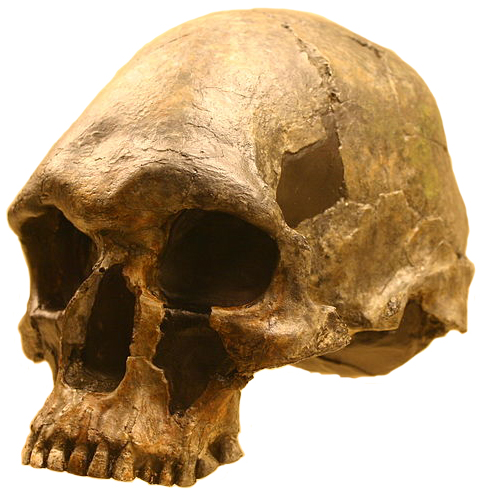
For more information, click here. Or, Try these sources:
- Thorne, A. G. 1977. Separation or reconciliation? Biological clues to the development of Australian. In J. Allen, J. Golson and R. Jones (eds.), Sunda and Sahul, pp. 187–204. Academic Press, London.
The initial descriptions of the crania from Kow Swamp identified "receding frontal squama, massive supraorbital regions and a supraglabella fossae..." which were considered to be "preserving an almost unmodified eastern erectus form" displaying a "..complex of archaic characteristics not seen in recent Aboriginal crania...". The features were considered to indicate "the survival of Homo erectus features in Australia until as recently as 10,000 years ago". However, Donald Brothwell disputed this interpretation suggesting the vault size and shape at Kow Swamp had been influenced by artificial cranial deformation, particularly in Kow Swamp 5. The varying morphological and metrical comparisons of the burials have distinguished them from modern Aboriginal crania and also a more gracile group of Pleistocene remains found at Lake Mungo and Keilor. These differences have been used to postulate separate arrivals of distinct groups of people. However, more recent comparison do not support Thorne's dual Pleistocene population model.
- Brothwell, D. 1975. Possible evidence of a cultural practise affecting head growth in some late Pleistocene East Asian and Australasian populations. Journal of Archaeological Science 2:75-77.
- Thorne 1975, 1976; Thorne and Macumber 1972.